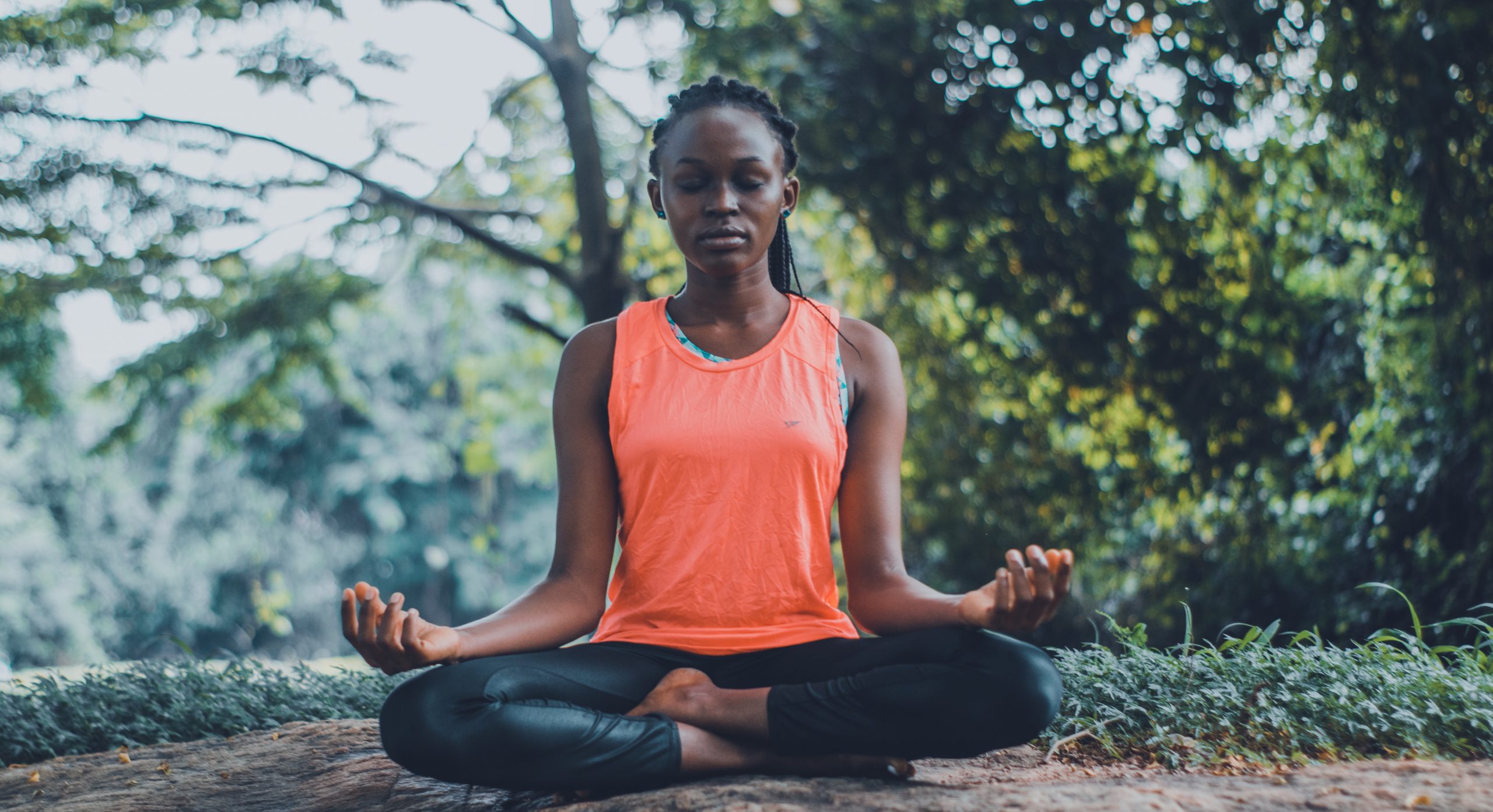
Yoga & Meditation
What is meditation? And how and why would I do it? Get the answers.
5 Different Ways to Meditate
Just as there are numerous styles of hatha yoga, so there are many ways to meditate. The first stage of meditation is to concentrate on a specific object or establish a point of focus, with the eyes either opened or closed. Silently repeating a word or phrase, audibly reciting a prayer or chant, visualizing an image such as a deity, or focusing on an object such as a lighted candle in front of you are all commonly recommended points of focus. Observing or counting your breaths and noticing bodily sensations are also optional focal points. Let’s take a closer look.
The Use of Sound
Mantra yoga employs the use of a particular sound, phrase, or affirmation as a point of focus. The word mantra comes from man, which means “to think,” and tra, which suggests “instrumentality.” Therefore, mantra is an instrument of thought. It also has come to mean “protecting the person who receives it.” Traditionally, you can only receive a mantra from a teacher, one who knows you and your particular needs. The act of repeating your mantra is called japa, which means recitation. Just as contemplative prayer and affirmation need to be stated with purpose and feeling, a mantra meditation practice requires conscious engagement on the part of the meditator. Maharishi Mahesh Yogi’s Transcendental Meditation (TM) espouses the practice of mantra yoga.
Chanting, an extension of mantra yoga, is a powerful way to enter into meditation. Longer than a mantra, a chant involves both rhythm and pitch. Western traditions use chants and hymns to invoke the name of God, to inspire, and to produce a spiritual awakening. Dating back to Vedic times, Indian chanting comes out of a tradition that believes in the creative power of sound and its potential to transport us to an expanded state of awareness. The rishis, or ancient seers, taught that all of creation is a manifestation of the primordial sound Om. Reflected in an interpretation of the word universe—”one song”—Om is the seed sound of all other sounds. Chanting Sanskrit often and properly produces profound spiritual and physical effects.
Many beginners find using a mantra in their meditation very effective and relatively easy. Chanting, on the other hand, can be intimidating for some people. If you feel awkward chanting on your own, use one of the many audiotapes of chants on the market, or participate in a group meditation where a meditation teacher leads the chant and the students repeat it. Although chanting in Sanskrit can be powerful, reciting a meaningful prayer or affirmation in any language can be effective.
The Use of Imagery
Visualizing is also a good way to meditate; one that beginners often find easy to practice. Traditionally, a meditator visualizes his or her chosen deity—a god or goddess-in vivid and detailed fashion. Essentially any object is valid.
Some practitioners visualize a natural object such as a flower or the ocean; others meditate on the chakras, or energy centers, in the body. In this type of meditation, you focus on the area or organ of the body corresponding to a particular chakra, imagining the particular color associated with it.
See alsoChakra Tune-Up
Gazing
Another variation on the use of imagery is to maintain an open-eyed focus upon an object. This focus is referred to as drishti, which means “view,” “opinion,” or “gaze.” Again the choices available to you here are virtually limitless. Candle gazing is a popular form of this method. Focusing on a flower in a vase, or a statue, or a picture of a deity are other possibilities.
Use this technique with your eyes fully opened or partially closed, creating a softer, diffused gaze. Many of the classical hatha yoga postures have gazing points, and the use of drishti is especially emphasized in the Ashtanga style of hatha yoga. Many pranayama techniques also call for specific positioning of the eyes, such as gazing at the “third eye,” the point between the eyebrows or at the tip of the nose.
Breathing
Using the breath as a point of focus is yet another possibility. You can do this by actually counting the breaths as you would in pranayama practice. Ultimately, however, meditating on the breath just means purely observing the breath as it is, without changing it in any way. In this instance, the breath becomes the sole object of your meditation. You observe every nuance of the breath and each sensation it produces: how it moves in your abdomen and torso, how it feels as it moves in and out of your nose, its quality, its temperature, and so on. Though you are fully aware of all these details, you don’t dwell on them or judge them in any way; you remain detached from what you’re observing. What you discover is neither good nor bad; you simply allow yourself to be with the breath from moment to moment.
Breath observance is the predominant technique used by practitioners of vipassana, commonly referred to as “insight” or “mindfulness” meditation. Popularized by such renowned teachers such as Thich Nhat Hanh, Jack Kornfield, and Jon Kabat-Zinn, this is a form a Buddhist practice. The word vipassana, which literally means “to see clearly” or “look deeply,” is also interpreted to mean “the place where the heart dwells,” and reflects the premise that thought arises out of our hearts.
See alsoThe Science of Breathing
Physical Sensations
Another way to meditate is to watch a physical sensation. Practice this with the same degree of detail as you would when watching the breath. In this context, you will look deeply at, or penetrate, a particular sensation that draws your attention, such as how hot or cool your hands feel. The increased sensitivity you gained due to your asana practice may provide you with other points of focus: the strength of your spine or the suppleness you feel in your lower body, for example. Observing a particular emotion or any specific area of discomfort is also a possibility. Whatever you choose remains your point of focus for the whole practice. You may find that observing a physical sensation can be more challenging than observing the breath. For most beginners, mantras, chants, and visualizations offer more tangible ways to replace or calm the scattered thoughts of our minds, which seem to be perpetually on sensory overload.
Source:https://www.yogajournal.com/meditation/let-s-meditate

Recent Comments